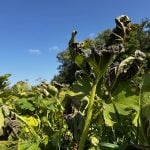After narrowly escaping bankruptcy, the North American Bison Co-op appears to be standing on better financial footings.
The co-op was removed from bankruptcy protection earlier this year after presenting creditors with a plan to overhaul its finances.
The co-op’s chief executive officer, Dieter Pape, said earnings continue to improve and the co-op should return to profitability next year.
More markets have been found in the United States for bison products, particularly within grocery stores and supermarkets, he said. The co-op also is increasing the slaughter at its plant in New Rockford, North Dakota, which will make its operations more efficient.
Read Also

Trade war may create Canadian economic opportunities
Canada’s current tariff woes could open chances for long-term economic growth and a stronger Canadian economy, consultant says — It’s happened before.
In July, a little more than 500 head of bison were slaughtered at the plant. Pape said they want to process at least 600 animals there in September.
There are about 330 members in the bison co-operative. A third of them are Canadian.
For two years, Canadian members were unable to ship their bison to the New Rockford plant for slaughter because of the U.S. ban on imports of live ruminants. Those members were able to resume shipments after the border was reopened earlier this summer.
“We have a number of Canadian members who are bringing animals in,” Pape said. “It’s great to have them back.”
The plant potentially could slaughter 20,000 head of bison per year, if it was operated 24 hours a day, seven days a week. It now processes bison on a single shift, five days a week.
“We’ve got a lot of room yet,” Pape said.














